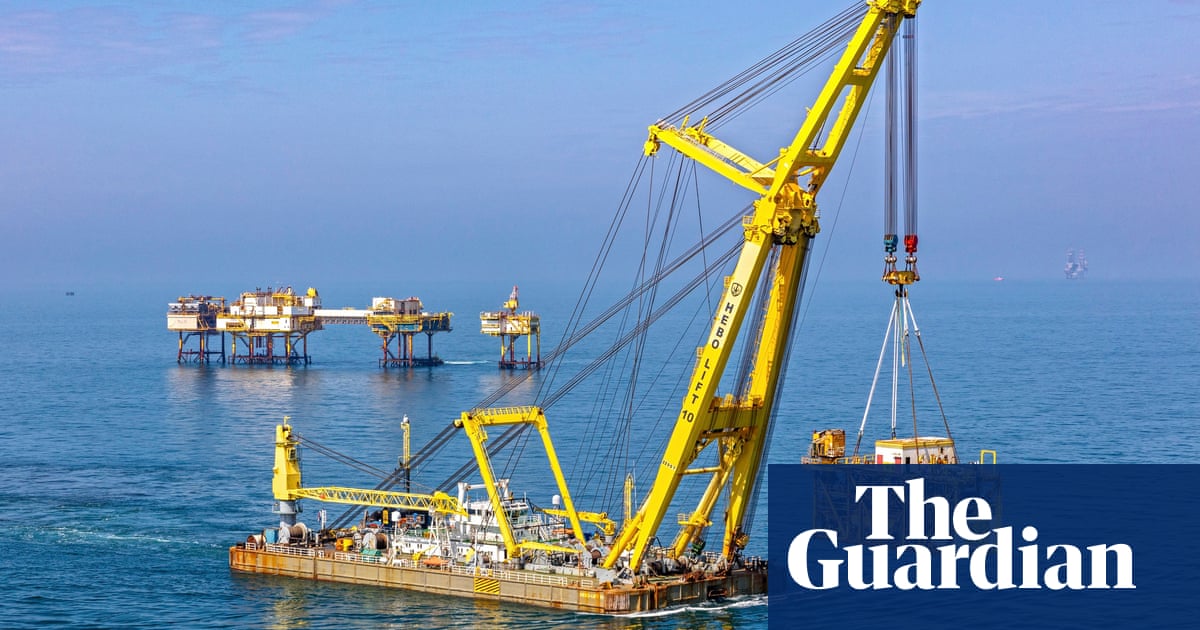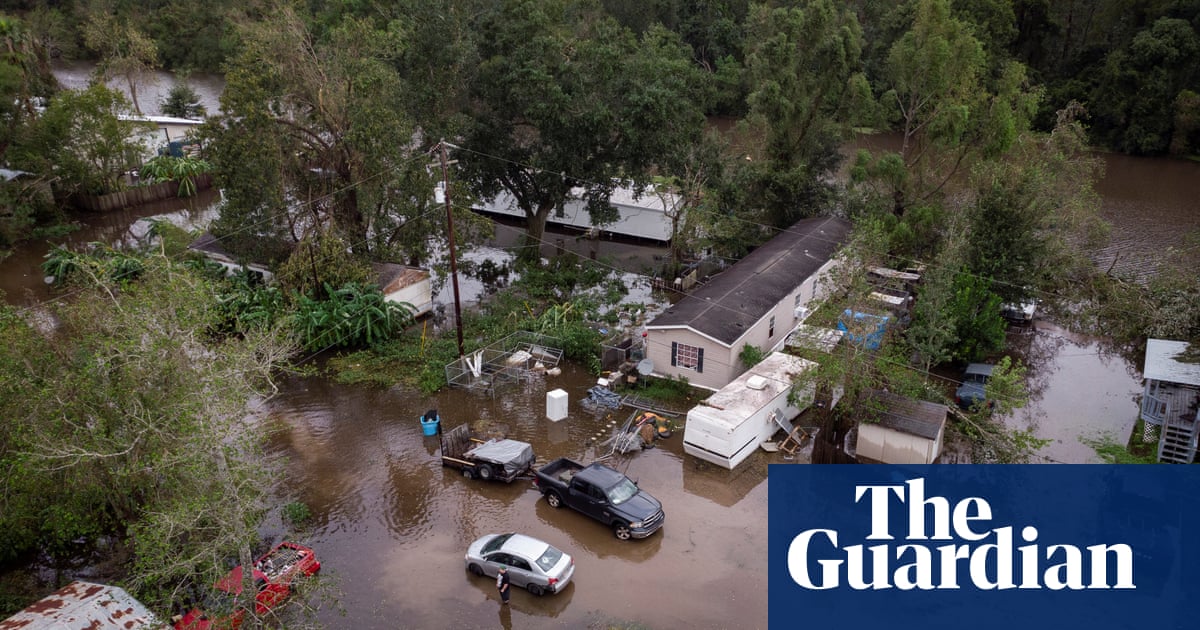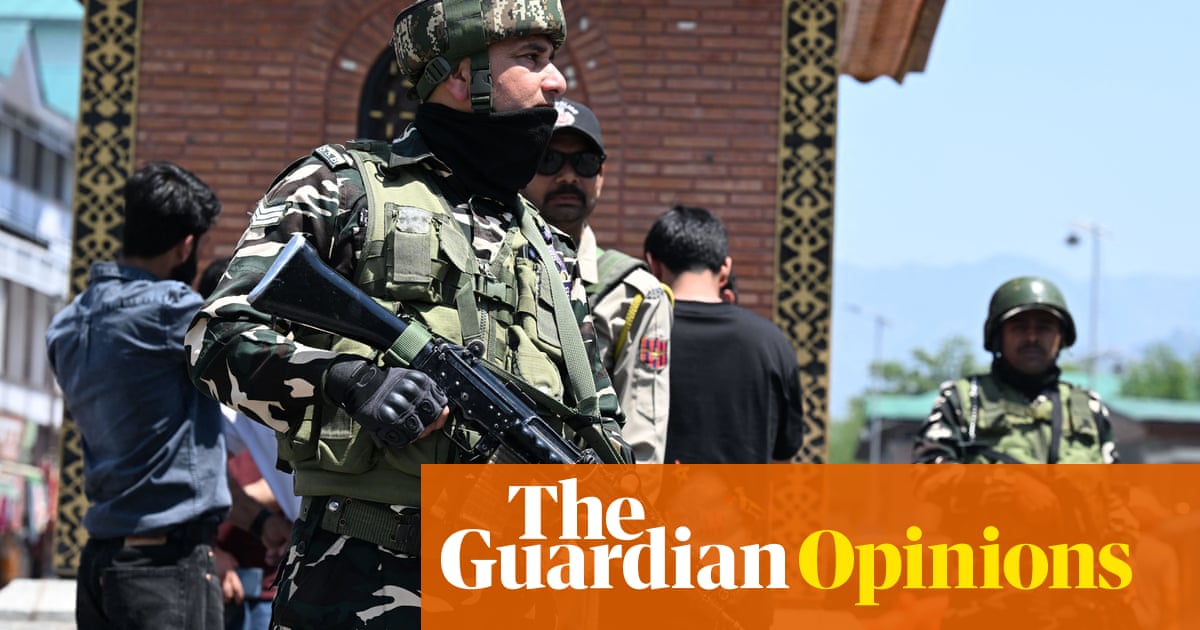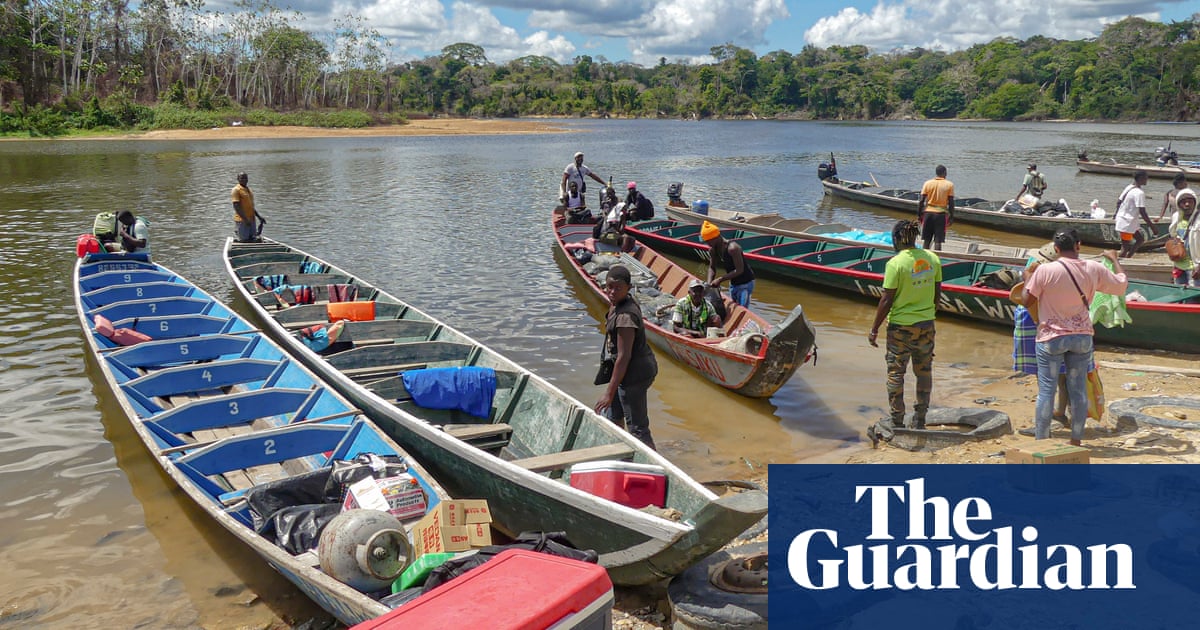Winter has been slow to release its icy grip from the upper midwest this year, and in northern Michigan, its effects will be keenly felt for months, perhaps years.
A devastating ice storm that hit late last month has left an estimated 3m acres of trees snapped in half or damaged from the weight of up to an inch-and-a-half of ice across the northern part of lower Michigan.
According to the Michigan department of natural resources, 3,000 state roads were affected, with 12 counties declared disaster areas.
Across the border in Ontario, around 350,000 electricity customers lost power where freezing rain fell for up to 30 continuous hours.
In Mackinaw City, a small resort town on the shores of Lake Huron, utility trucks filled hotel parking lots a full two weeks after the storm. The 7.30am ferry to Mackinac Island saw dozens of utility workers on board, who upon arrival, took off to various parts of the island to cut up downed trees and clear vegetation.
“This was one of the oldest trees on the island,” says Dustin Cobb, who drives a horse dray that delivers goods around the island, pointing to the mangled remains of a lilac tree in a yard on Mackinac Island’s Cadotte Avenue.
“It’s sad to see it gone.”
Around 80% of the island’s state park was closed with the cleanup said to take months.
Ice storms rely on a specific chain of climatic conditions.
Several kilometers above the ground, precipitation falls as snow. As it continues its downward trajectory, the snow falls into a layer two or three kilometers above the ground where the air temperature rises above freezing, leading to the snow turning into rain. As the rain falls closer to the ground it again meets temperatures at or below freezing, leading to it refreezing upon contact with objects such as trees, power lines, roads and streets.
Snow isn’t as destructive as ice, say experts, as it doesn’t tend to stick to the surface of critical infrastructure such as powerlines or trees since wind gusts typically blow it around.
Hard ice can be hugely damaging.
The 5-mile-long Mackinac Bridge that spans the Strait of Mackinac was closed following the storm for the longest period of time since it opened in the 1950s, due to huge slabs of ice falling from its upper structure and narrowly missing vehicles on the highway below.
“In terms of debris and clean-up, it’s one of the worst natural disasters in recent memory,” says Lauren Thompson-Phillips of the Michigan state police.
“The trees down, blocks roads, [debris] in people’s yards. Over the next two weeks we’ll largely get the picture of the entire scope of the damage.”
The storm hasn’t just been bad for trees and the thousands of residents who went without electricity for weeks, which during cold periods can be deadly. Being cut off from the rest of the world saw some Michiganders lash out, with linemen and utility companies receiving death threats from locals. Gretchen Whitmer, Michigan’s Democratic governor, has declared a state of emergency and sought federal funding through Fema to assist the worst-affected counties.
Climate experts say that the warming atmosphere resultant from climate change can retain more moisture, which could fuel severe freezing rain and ice storms under the correct conditions.
“A lot of areas where you tend to have ice storms are regions where you have terrain features that help to either trap cold air near the ground, or channel the cold air, for example, in a valley,” says Christopher McCray, a climate simulation specialist at the Consortium on Regional Climatology and Adaptation to Climate Change (Ouranos) in Montreal.
“In Montreal, the St Lawrence River valley is one of the main freezing rain areas in North America and the world because of the valley, which is orientated from the southwest to the north-east.”
Other areas that are susceptible to freezing rain and ice storms include the region around Portland, Oregon, and the south-eastern US, including the Carolinas, Virginia and parts of Appalachia. “The mountain range there modifies the wind flow, so you get cold air that’s being funneled southward at the surface.”
McCray says it’s difficult to identify trends that match climate change with greater incidents of significant freezing rain events because currently there is a dearth of observations.
“We have weather stations that record freezing rain occurrence, but amounts are harder to come by,” he says.
“From what I’ve seen there doesn’t seem to be a clear trend over the last few decades, but we have looked at future projections.”
Those projections suggest that the regions that experience freezing rain today will see that potentially happen less often in the future, but areas further north could see more ice storms.
“We’re looking at a northward shift in the areas where freezing rain is most common. That’s because the temperature structure – warming temperatures overall, especially in winter, is going to mean warmer air at the ground, so freezing rain is going to become just plain rain,” says McCray.
“Freezing rain is not going to disappear, it’s going to appear further north. In western Canada and Alaska, it looks like there’ll be an increase.”
It could also have major consequences for swathes of hydroelectric power infrastructure that supply cities such as Montreal and Quebec City with much of their electricity.
A January 1998 ice storm that hit New England and large parts of eastern Canada saw millions of people lose power amid freezing conditions that led to dozens of deaths. The 2021 winter storm that caused around 200 deaths in Texas saw layers of freezing rain on highways result in deadly pile ups and grocery shortages in Fort Worth on 15 February that year.
Back on Mackinac Island, a residential storm damage cleanup effort was set to begin on 21 April – more than three weeks after the ice storm.
But although the ice is gone, its damaging effects are set to linger across this vast, wooded region for years: millions of tons of lumber across are now set to dry out in the months and years ahead, potentially serving as fuel for future wildfires.

 5 hours ago
4
5 hours ago
4













































